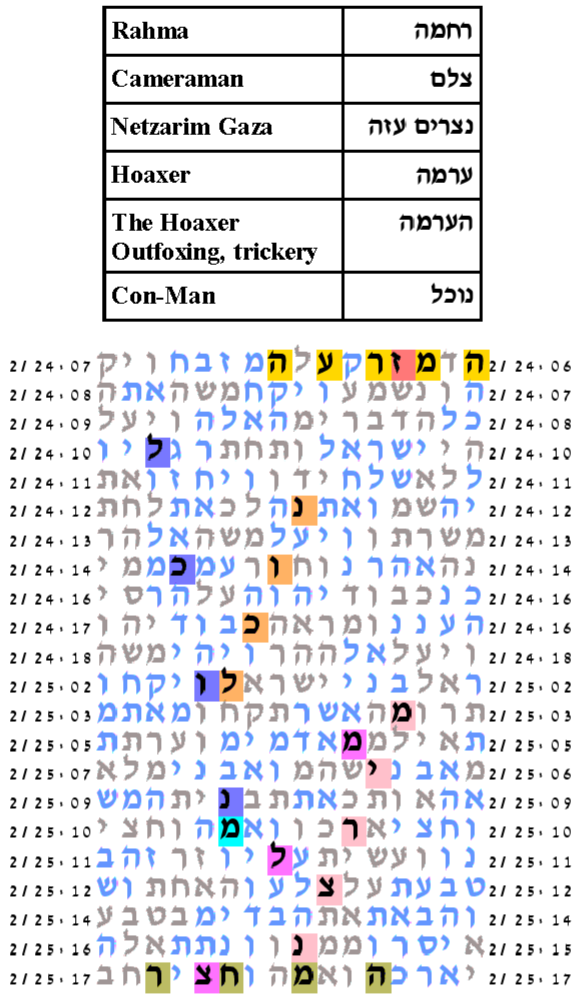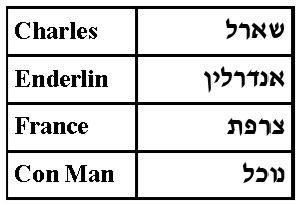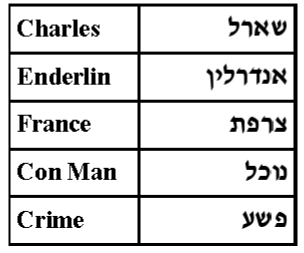| Home» Muhammad al-Durrah |
Muhammad al-Durrah
Al-Durrah's death was a staged media event aimed at tarnishing the reputation of the State of Israel, and demonizing Israel in the eyes of the world community by depicting IDF soldiers as heartless killers who deliberately target children. This hoax is a modern re-invention of blood libel against Jews and Israel.
The people responsible for the deception are first the cameraman Talal Abu Rahma who had staged the scene. And second, the French journalist Charles Enderlin who broadcast the story. He saw the entire video shot by the cameraman. He saw the staged ambulence rescues of the teenage boys faking having been injured. He saw the entire video sequence of al_Durrah. But his a priori world view that the IDF engages in heartless killing was so strong that he chose to interpret what he saw in a way consistent with this world view. And when confronted with the analysis and evidence that the scene had been staged he stubbornly refused to acknowledge the truth.
For the cameraman's name we try the key words Rahma, T. Rahma, T. A. Rahma, and Talal Rahma. Besides his name key words we try the key words Hoaxer or Con-Man. And we add a key word for the place Netzarim, Gaza. Thus there are a total of 8 experiments. The best experiment used the key word combination Talal Rahma, Hoaxer, and Netzarim Gaza. With the expected number of ELSs set to 50, the probability that a text from the ELS random placement text population would have as compact table as the one produce by the Torah text is 212/1,000. Combining the results on a trial by trial basis in our standard way, the probability that a text from the ELS random placement text population would have as good a combined result as the Torah text is 786.5/1,000, indicating a statistically insignificant result.
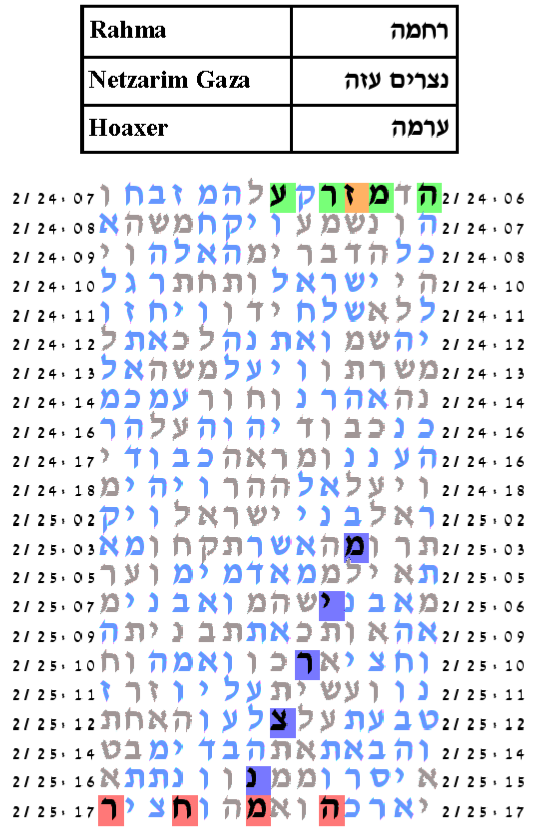
Examining this table, we find that in fact there are two ELSs for Con-Man and two ELSs for the key word cameraman. In addition, Rabbi Glazerson noticed that there is a ה that precedes the ELS for ערמה, hoaxer. The word הערמה with one vowel pointing can mean the hoaxer. And with another vowel pointing is the cognate word meaning outfoxing and trickery. This word is even more appropriate. But we do not associate any p-value with this finding.
The person responsible for staging the al-Durrah incident was the photographer Talal Abu Rahma. He is perhaps the main principal figure. It cannot be that this is not encoded. As we reviewed some of the articles published about this incident we saw that sometimes the photographer was called Abu Rahma. So we redid the experiment using the additional appellation Abu Rahma as one key word. This was also statistically not significant.
It was hard to believe that there would not be a protocol by which the principal instigator of the incident would be found to be encoded at a statistically significant level. So we looked again in a different way. We opened up the maximum ELS skip for each of the key words Abu Rahma and Con-Man to 20,000. Still under this protocol, the number of ELSs of Abu Rahma is 45, the same as in the original protocol having expected number of ELSs set to 50. However, the expected number of ELSs for Con-Man increased to 141,692. The number actually observed was 138,926. Now the best area table from the Torah text was 15 rows by one column. Here the number of configurations of the two ELSs in a table of better or equal compactness to that produced by the Torah text is easily countable and is 14. The number of observed ELSs for Abu Rahma is 45. And the probability that an ELS of נוכל, Con-Man, would match in a given place of these 14x45 places is about .0000129. Hence, the probability that a text from the ELS random placement text population would have as compact a table as that produced by the Torah text is about 15x45x.0000129=.0058, less than 6/1,000.

The second instigator of the hoax is the journalist Charles Enderlin. For the journalist's name we try the key words Enderlin, C. Enderlin, and Charles Enderlin. There were no ELSs for C. Enderlin. So we are left with only two appellation possibilities. Besides his name key words we try the key words Hoaxer or Con-Man. And we add a key word for France as this was the French government controlled television station that has supported Enderlin in the hoax. Thus there were a total of four experiments. The best of the four used the key words Charles Enderlin, Con-Man, and France. With expected number of ELSs set to 50, the probability that a text from the ELS random placement text population would produce a better table than that produced by the Torah text is 27.5. Using our standard methodology for combining results in a trial by trial basis, the probability that a text from the ELS random placement text population would have as good as combined result as the Torah text is 79/1,000.

This table has another significant word that we did not think about at the time we did the experiment. Next to the final Nun of Enderlin, there is letter after letter the word פשע, crime. By broadcasting to the world the staged event as if it were the truth, Enderlin committed a crime. Had we thought of adding this word in the original protocol, we would have found that the probability of a text from the ELS random placement text population producing as compact a table as the Torah text would have been about 26/10,000.

We also tried a similar expeirment using the key words for Enderlin, but instead of the key word France we substitute the key words Netzarim Gaza. And again we try the key words Hoaxer or Con-Man. The best of the four experiments used the key words Enderlin, Con-Man, and Nezarim Gaza. With the expected number of ELSs set to 50, the probability that a text from the ELS random placement text population would have as good a table as that produced by the Torah text is 12.5/1,000. As there were four experiments, by combining results on a trial by trial bases the probabiilty that a text from the ELS random placement text population would have as good as a combined result as that of the Torah text was 39/1,000.
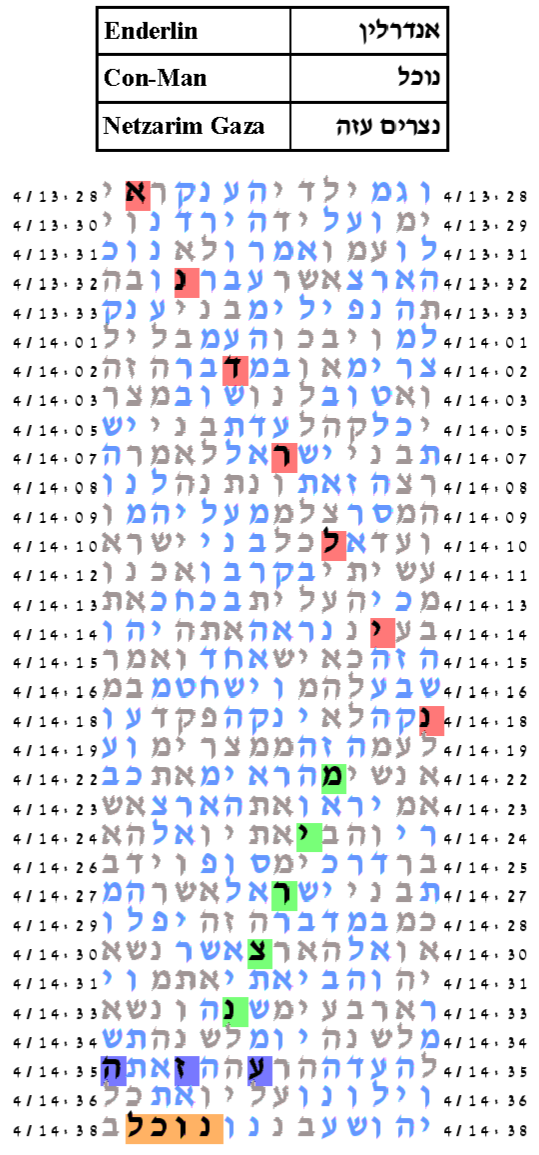


 Documentaries and Tutorials
Documentaries and Tutorials